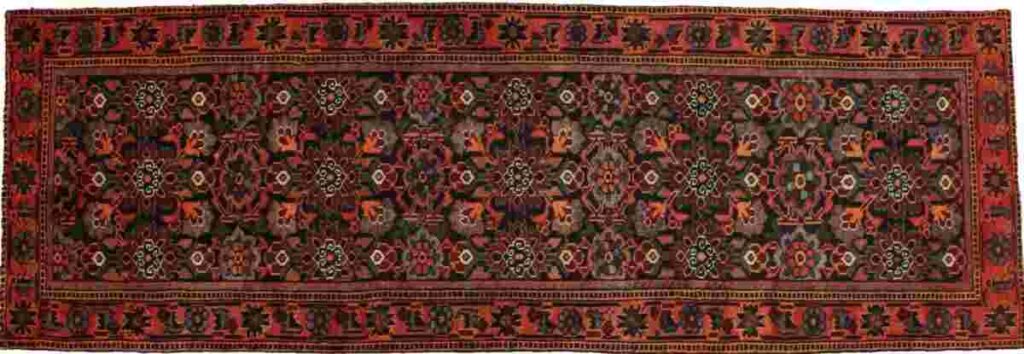Nanaj (also Romanized as Nenej) is a village in Jowkar Rural District, Malayer County, Hamadan Province, Iran. It is a historical village in the region, having an old Qajar mosque. But, it is more famous for its mountainous nature, caves, and waterfalls, and above all, the Nanaj Rug.
Central Zagros’ nature provides the best raw materials for rug weaving, including cotton and natural dyes. The weave of the area proved to be durable. This article introduces the Nanaj Rug to you, the elegant souvenir of the Zagros mountains.
Technical Aspects and Structure of The Nanaj Rugs
Like other Malayer villages, Nanaj follows the Hamadan rug structure: woolen piled, single-weft, and woven with the symmetrical/Turkish knot. This commonly also includes cotton warps and wefts. Lustrous yarn of the area helps the gem-like patterns glowing as well as undyed camel hair. Nanaj wool, too, is of high quality and so thick, ideal for piling.


Dyeing and painting of Nanaj Rug
Dark blue is the most popular shade in Nanaj. Moreover, the artisans have a pretty strong interest in red and cream. Acid moderated madder brings shades of rose and vermillion. The undyed camel hair of the region gets a gold shining in the ground midnight blue. The Lustrous yarn of the region makes all shades glow.


Designs and Patterns of The Nanaj Rug
Belonging to Malayer County, Nanaj weavers follow their own tradition of design. Repeats of medium-sized round flowers form the all-over designs. Some rugs also have a central medallion, enjoying the same repeats. These floral patterns have been set on deep-colored grounds like shining gems on crimson or blue velvet.
Nanaj designs are well known for their margins. Wide margins are usually filled with Shah Abbasi flowers. They are the same in size as those of their grounds and chained by Eslimi (Arabesque) bands.



